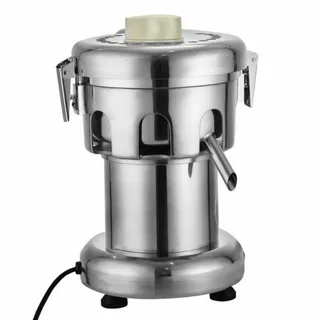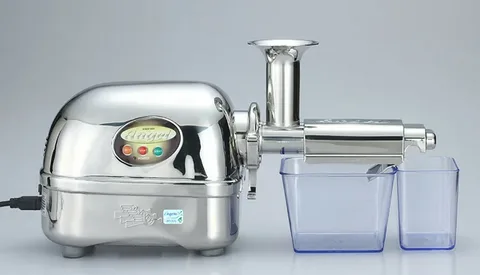Deep cycle batteries are the unsung heroes of energy storage. Whether you’re powering a boat, an RV, or off-grid solar systems, these robust power sources deliver reliable performance when needed. Among them, the 200Ah battery stands out for its capacity to provide extended runtime and versatility. But how do you ensure your deep cycle battery operates at peak efficiency? Understanding its specifications and maintenance needs is key to unlocking its full potential. In this guide, they’ll explore practical tips and strategies to maximize the efficiency of your 200Ah battery deep cycle. Implementing simple practices will enhance performance and prolong its lifespan, ensuring you’re never left in the dark again! Let’s dive into what makes these batteries tick and how you can keep yours running smoothly for years.
Understanding the 200Ah Battery Capacity
The 200Ah battery capacity refers to its ability to deliver a specific current over time. It can provide up to 200 amps for one hour or smaller amounts for longer durations. This makes it ideal for various applications, from solar power systems to RVs.
Understanding this capacity helps users make informed decisions based on their energy requirements. For instance, if your devices collectively draw ten amps, the battery could last around 20 hours before recharging. However, actual performance may vary due to temperature and discharge rates. Thus, always consider these elements when planning your energy usage.
Tips for Increasing the Efficiency of Your 200Ah Battery
To boost the efficiency of your 200Ah battery, start with proper charging techniques. Use a smart charger that matches your battery’s specifications. This ensures optimal charging and extends its lifespan. Next, maintain consistent temperature levels. Extreme heat or cold can significantly impact performance. Storing batteries in a climate-controlled environment is ideal.
Another important tip is to minimize parasitic loads. Disconnect any devices not in use to reduce unnecessary power drain. Regularly check connections for corrosion and ensure they’re clean and tight. This simple step can enhance conductivity and overall performance.
Consider using a Battery Management System (BMS). A BMS monitors voltage levels across cells, preventing over-discharge while maximizing energy usage.
Benefits of Deep Cycle Batteries
Deep cycle batteries offer remarkable versatility for various applications. They are designed to provide steady power over extended periods, making them ideal for renewable energy systems and recreational vehicles.
Long-Lasting Energy Storage
One of the main benefits of deep-cycle batteries is their ability to provide long-lasting energy storage. They are designed to discharge slowly over an extended period, making them suitable for applications that require a steady power supply.
Versatility
Deep-cycle batteries can be used in various applications, including renewable energy systems, marine vessels, RVs, golf carts, and electric vehicles. This versatility makes them a popular choice among consumers.
Deep Discharge Capability
Unlike other battery types, deep cycle batteries can be discharged up to 80% without damaging the cells. This means they can provide more usable energy than other battery types.
Low Self-Discharge Rate
Deep cycle batteries have a low self-discharge rate, meaning they can hold their charge longer when not used. This makes them ideal for applications where the battery may sit idle for extended periods.
Durability
Deep cycle batteries are designed to withstand repeated deep discharges and recharge without significantly affecting their performance or longevity. This durability makes them a cost-effective solution in the long run.
Maintenance-Free Option
Some deep-cycle batteries are maintenance-free, meaning they do not require regular maintenance or topping up electrolyte levels. This makes them a convenient and hassle-free option for users.
Environmentally Friendly
Deep cycle batteries are often made with recyclable materials, making them an environmentally friendly choice for energy storage. They also have a longer lifespan compared to other battery types, reducing the need for frequent replacements and ultimately reducing waste.
Battery Storage Tips
Proper battery storage can greatly influence the lifespan of your 200Ah deep cycle battery. Choose a cool, dry location away from direct sunlight and extreme temperatures. Excessive heat can cause damage, while freezing conditions may lead to reduced performance.
Always store your battery upright. This helps prevent leaks and ensures that electrolyte levels remain stable. If you’re storing it for long periods, consider disconnecting it to avoid potential drainage.
Regularly check the charge level during storage. Aim to maintain a state of charge between 40% and 60%. This keeps the cells healthy without risking over-discharge. If applicable, using a maintenance charger can be beneficial. It prevents self-discharge issues and maintains optimal voltage levels without overcharging. Keep your battery terminals clean and free from corrosion before storage. A little preventive care goes a long way in securing efficient future usage.
Avoiding Over-Discharge: Key Precautions
Over discharge can significantly harm your 200Ah deep cycle battery. One of the easiest ways to avoid it is by setting a discharge threshold. Aim not to let your battery drop below 50% capacity. Invest in a quality battery monitor. This device provides real-time insights into voltage and current levels, helping you stay aware of your battery’s status.
Additionally, be mindful of how much power you continuously draw from the system. Consider rotating their usage times or opting for more efficient alternatives if you’re using high-draw appliances. Regularly check connections and cables for wear or corrosion, as these issues can lead to increased resistance. Resistance draws extra energy that could push the battery into an over-discharge situation.
Always recharge promptly when you notice low voltage readings. Developing this habit will prolong the life span of your deep-cycle battery while keeping it ready for use at all times.
Top Maintenance Tips for Extending the Life of Your 200 Amp Hour Battery
Regular inspections are crucial for battery longevity. Check for signs of corrosion on terminals and ensure connections are tight. A clean terminal contributes to efficient power transfer.
Regular Inspections
Perform routine checks on your 200 Amp Hour Battery to monitor for any signs of wear or damage. Look for leaks, corrosion, or swelling. Early detection of issues can prevent more serious problems down the line.
Proper Charging Practices
Charge your battery according to the manufacturer’s recommendations. Avoid overcharging or deep discharging, as both can significantly shorten the battery’s lifespan. Use a compatible charger to ensure optimal performance.
Maintain Correct Voltage Levels
Monitor the voltage levels and ensure they remain within the recommended range. This helps maintain battery health and prevent damage caused by undercharging or overcharging.
Clean Terminals and Connectors
Corrosion can build up on battery terminals, affecting performance. Clean the terminals and connectors regularly with a baking soda solution and a wire brush to ensure a good connection.
Keep the Battery Cool
Heat can reduce battery efficiency and lifespan. Store and operate your battery in a cool, dry environment to prevent overheating and prolong its life.
Ensure Proper Ventilation
Good ventilation helps dissipate heat and gases that batteries can emit. Ensure that your battery area is well-ventilated to maintain optimal operating conditions.
Avoid Excessive Vibration
Minimize vibration exposure, as it can damage the internal components of your battery. Secure the battery in place to prevent unnecessary movement and potential harm.
Regular Inspection
Regular inspections of your 200Ah deep cycle battery are vital for optimal performance. These checks help identify potential issues before they escalate. Start by examining the terminals for corrosion or loose connections. Clean any buildup with baking soda and water, ensuring everything is tight and secure.
Next, inspect the casing for cracks or leaks. A damaged battery can be unsafe and less efficient. If available, remember to look at the charge level indicators. Keeping an eye on these readings will alert you to any inconsistencies in performance. Schedule these inspections every few months as part of your maintenance routine. It’s a small investment in time that pays off through extended battery life and enhanced efficiency.
Maintaining Battery Fluid Levels
Maintaining the fluid levels in your 200Ah deep cycle battery is crucial for optimal performance. These batteries typically use electrolyte solutions that need to be regularly checked. Start by inspecting the battery every month. Look for any signs of evaporation or depletion in the fluid level. If it seems low, add distilled water to return it to the recommended mark.
Avoid using tap water, as impurities can harm your battery’s lifespan. When adding water, do so before charging; this allows better absorption and minimizes bubbling. Be mindful not to overfill either. Excess liquid can lead to spillage during charging cycles, which may cause corrosion or other issues. Keeping a consistent check on these levels helps ensure the longevity and efficiency of your power source without unnecessary interruptions in usage.
Routine Inspections for Early Problem Detection
Routine inspections are crucial for maintaining the health of your 200Ah deep cycle battery. Regular checks can help you identify potential issues before they escalate into costly repairs or replacements. Start by examining the terminals and connections. Look for any signs of corrosion, which can impede performance. Clean them gently with a mixture of baking soda and water if necessary.
Next, inspect the physical condition of the battery casing. Any cracks or bulges could indicate internal damage that needs immediate attention. Don’t forget to check voltage levels using a multimeter. Consistently low readings may signal problems that require professional evaluation. Keeping an eye on these details will ensure your battery operates efficiently and lasts longer. Early detection is key to avoiding unexpected downtime during critical moments when power is essential.
How to Get the Most Out of Your Battery Deep Cycle 200Ah
To maximize the potential of your 200Ah deep-cycle battery, you should first understand its charging cycles. Regularly charge it to maintain optimal performance without hitting that dreaded over-discharge point. Monitor the discharge rate closely. Avoid drawing too much power at once. This practice helps extend battery life and ensures a consistent energy supply.
Temperature control is also crucial. Keep the battery in a climate-controlled environment to avoid extreme heat or cold, which can impair efficiency. Utilize high-quality chargers designed specifically for Battery Deep Cycle 200Ah. These will prevent damage and ensure an even charge distribution across all cells. Incorporating solar panels can be a game-changer for extended usage periods. They provide a sustainable way to keep your system charged while reducing reliance on traditional power sources.
Common Mistakes to Avoid
Many users underestimate the importance of fully charging their 200Ah battery. Inconsistent charging can lead to reduced capacity and lifespan. Always ensure that your battery reaches a full charge regularly. Another common pitfall is neglecting temperature considerations. Extreme heat or cold can significantly affect performance, so storing your battery in a climate-controlled environment is crucial whenever possible.
Failing to clean terminals is often overlooked but vital. Corrosion can accumulate over time, impeding connectivity and overall efficiency. Overloading the system is also an issue. Exceeding recommended discharge rates stresses the battery and dramatically shortens its life span. Ignoring manufacturer guidelines leads many down the wrong path. Each deep-cycle battery has specific needs; following these recommendations will help avoid unnecessary troubles later.
Alternative Energy Sources for Extended Usage
Exploring alternative energy sources can significantly enhance the longevity of your 200Ah deep cycle battery. Solar panels are a popular choice. They harness sunlight, converting it into usable energy to recharge your battery during the day. Wind turbines also present an innovative option. If you live in a breezy area, capturing wind energy can provide consistent power for extended usage and reduce dependency on conventional charging methods.
Hydro generators offer another exciting avenue. These devices generate electricity for those near flowing water as water flows through them, efficiently using natural resources. Integrating these renewable sources not only maximizes battery life but also promotes sustainability. It’s about creating a self-sufficient system that meets your needs while minimizing environmental impact.
Experimenting with hybrid systems can further optimize performance and reliability. Combining different energy sources allows for flexibility in various conditions, ensuring you always have backup options.
Conclusion
In conclusion, maintaining your 200Ah battery deep-cycle is essential for maximizing efficiency and extending lifespan. Regular maintenance, including proper charging practices and periodic inspections, ensures your battery performs optimally and avoids premature failure. By following the tips outlined, such as keeping terminals clean and ensuring correct storage conditions, you can enhance the reliability of your battery system. Implementing these best practices will improve performance and safeguard your investment, ensuring that your 200Ah battery deep cycle delivers dependable power for all your needs.
FAQ’s
What is a deep-cycle battery?
A deep-cycle battery is designed to provide a steady current over an extended period. Unlike starting batteries, which deliver short bursts of high power, deep-cycle batteries are made for repeated discharge and recharge cycles.
How often should I inspect my 200Ah battery?
Regular inspections every month or so are recommended to ensure all connections are tight and corrosion-free. This helps detect potential issues before they become serious problems.
Can I use my 200ah Battery Deep Cycle with solar panels?
Yes! 200ah Battery Deep Cycle pair very well with solar systems as they can store energy produced during sunny days for later use when sunlight isn’t available.
What precautions should I take against over-discharging?
Be mindful of how much power you’re using to avoid over-discharging. Investing in a monitoring system can help track usage and alert you before it reaches critical levels.
Are there alternative energy sources I can combine with my 200Ah battery?
Certainly! Wind turbines or small hydro generators can complement your setup by providing additional charging options when conditions allow.
| Related Business Listings |
| Contact Directory |
| Local Business Profiles |




